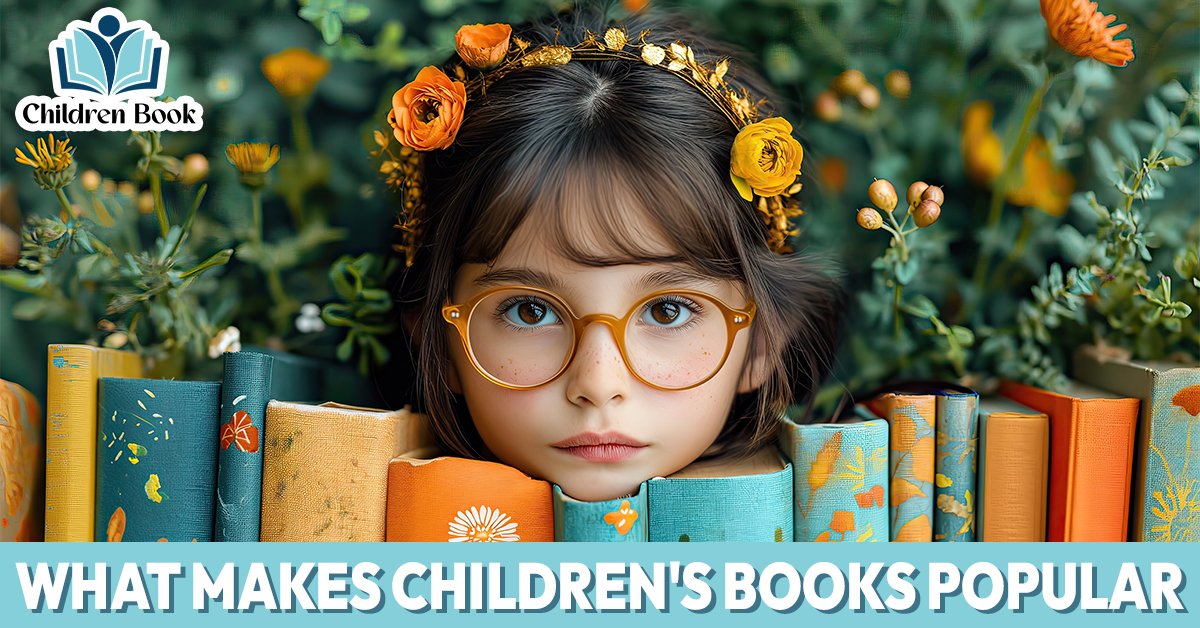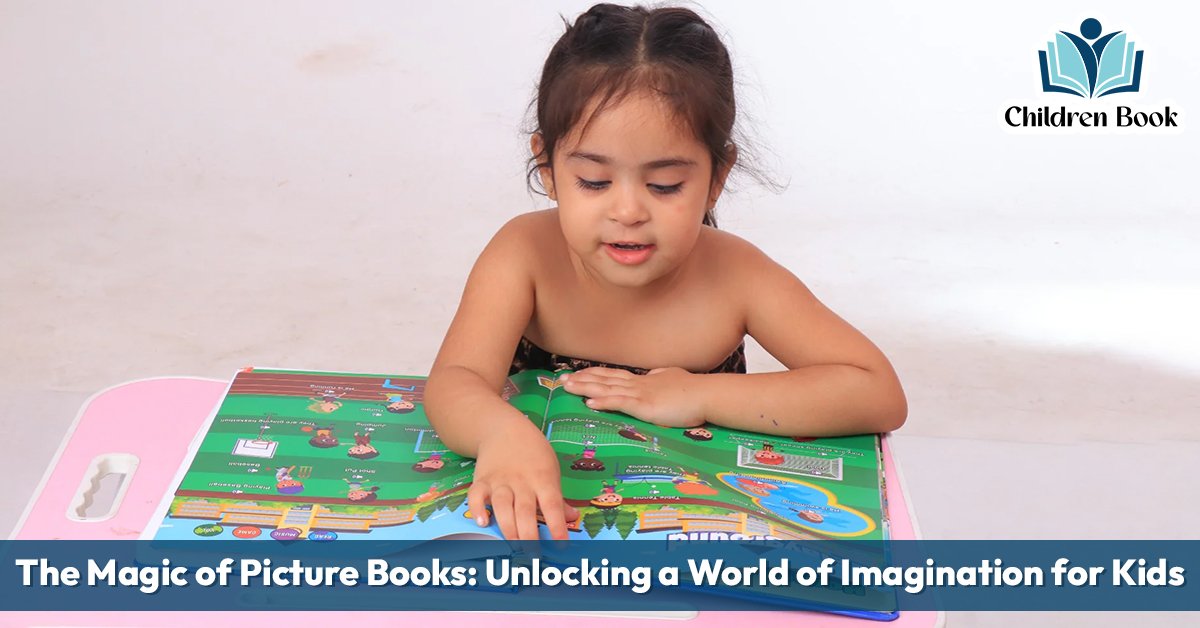Definition of Children's Books
Children’s books are literary works written and illustrated specifically for young readers, typically ranging from infants to pre-teens. These books are designed to entertain, educate, and inspire children through engaging stories, memorable characters, and imaginative illustrations.
Overview of Their Popularity and Appeal
Children’s books have a timeless appeal, captivating young minds with their creativity and wonder. From classic fairy tales to contemporary adventures, these books play a crucial role in a child’s development, fostering a love for reading and learning.
Purpose of the Article
This article explores the elements that make children’s books popular. We will examine the importance of engaging stories, memorable characters, visual appeal, language, educational value, emotional connections, and the influence of parents and educators. Additionally, we will look into marketing strategies and the impact of multimedia formats.
Elements of Popular Children's Books
Engaging Stories and Plots
A captivating storyline is at the heart of every popular children’s book. These stories often feature adventurous plots, magical elements, and unexpected twists that keep young readers hooked from beginning to end.
Memorable Characters
Characters in children’s books need to be relatable and memorable. Whether it’s the mischievous antics of Curious George or the brave deeds of Harry Potter, characters that resonate with children become beloved figures that they return to again and again.
Relatable Themes
Themes such as friendship, bravery, and kindness are commonly explored in children’s books. These themes help children navigate their own experiences and emotions, making the stories more meaningful and impactful.
Imaginative and Creative Settings
Children’s books often transport readers to fantastical worlds filled with wonder and excitement. Imaginative settings stimulate a child’s creativity and sense of adventure, making the reading experience more engaging.
Illustrations and Visual Appeal
Role of Illustrations in Children's Books
Illustrations play a crucial role in children’s books, helping to bring the story to life and capture the young reader’s imagination. They complement the text and add a visual element that enhances understanding and enjoyment.
Colorful and Detailed Artwork
Vibrant, colorful, and detailed illustrations attract children’s attention and make the book more appealing. These visuals often tell a story of their own, adding depth and dimension to the narrative.
Integration of Text and Images
The seamless integration of text and images is essential in children’s books. Effective layouts ensure that illustrations complement the story without overwhelming the text, creating a harmonious reading experience.
Language and Readability
Simple and Clear Language
Children’s books should use simple, clear, and age-appropriate language. This makes it easier for young readers to follow the story and improves their reading comprehension skills.
Rhyming and Rhythmic Text
Rhyming and rhythmic text adds a musical quality to children’s books, making them more enjoyable to read aloud. This technique helps in developing phonemic awareness and enhances memory retention.
Age-appropriate Vocabulary
Using vocabulary that is appropriate for the target age group is crucial. This ensures that children understand the story and can learn new words without becoming frustrated or overwhelmed.
Educational Value
Moral Lessons and Values
Many popular children’s books convey important moral lessons and values, such as honesty, kindness, and perseverance. These stories help children learn right from wrong in an engaging and memorable way.
Educational Content
Books that incorporate educational content, such as facts about nature, history, or science, are highly valued. They provide learning opportunities while entertaining the child, making the acquisition of knowledge fun.
Encouraging Critical Thinking and Imagination
Children’s books that encourage critical thinking and stimulate the imagination help in the cognitive development of young readers. Puzzles, mysteries, and open-ended questions within stories challenge children to think creatively and critically.
Emotional Connection
Building Empathy and Emotional Intelligence
Stories that explore different emotions and experiences help children develop empathy and emotional intelligence. By relating to characters’ feelings and situations, children learn to understand and manage their own emotions better.
Creating a Sense of Wonder and Adventure
Children’s books often create a sense of wonder and adventure, inspiring curiosity and a love for exploration. This sense of awe keeps children engaged and excited about reading.
Personal and Cultural Relevance
Books that reflect a child’s personal experiences and cultural background can have a profound impact. They provide representation and validation, making the stories more relatable and meaningful.
Series and Continuity
Popular Book Series for Children
Series like “Harry Potter,” “The Magic Tree House,” and “Diary of a Wimpy Kid” have captured the hearts of young readers worldwide. These series create long-lasting engagement by developing complex characters and evolving plots over multiple books.
Benefits of Book Series for Young Readers
Book series encourage children to develop long-term reading habits and deepen their connection with characters and storylines. The anticipation of a new release keeps them excited about reading.
Developing Long-term Reading Habits
Reading a series helps children build consistency and a habit of reading. It fosters a sense of achievement and continuity, as they follow characters through various adventures and challenges.
Marketing and Accessibility
Effective Marketing Strategies
Effective marketing strategies, such as book fairs, author visits, and social media campaigns, play a significant role in popularizing children’s books. Awards, endorsements, and positive reviews also contribute to a book’s success.
Role of Awards and Reviews
Awards like the Caldecott Medal and the Newbery Medal, along with positive reviews from reputable sources, boost a book’s visibility and credibility, making it more likely to be chosen by parents, teachers, and librarians.
Accessibility in Libraries and Bookstores
Ensuring that children’s books are widely available in libraries and bookstores is crucial for their popularity. Easy access to a diverse range of books encourages more children to read.
Interactive and Multimedia Formats
Interactive Books and Apps
Interactive books and apps engage children by combining reading with activities like games, puzzles, and sound effects. This interactive element makes reading more dynamic and fun.
Audiobooks and Digital Editions
Audiobooks and digital editions provide alternative ways for children to enjoy stories. Audiobooks can enhance listening skills, while digital editions offer portability and interactive features.
Benefits of Multimedia Formats
Multimedia formats cater to different learning styles and preferences, making stories accessible to a wider audience. They also keep up with technological advancements and the changing ways children consume media.
Impact of Parents and Educators
Influence of Parents on Children's Reading Choices
Parents play a crucial role in influencing their children’s reading habits. Reading aloud to children, providing a variety of books, and modeling a love for reading can significantly impact a child’s interest in books.
Role of Teachers and Librarians
Teachers and librarians are essential in promoting children’s literature. They introduce children to new books, organize reading programs, and create a supportive environment for reading.
Encouraging a Reading Culture
Creating a reading culture at home and in schools helps foster a lifelong love for books. Celebrating reading milestones, discussing stories, and providing access to diverse books are key strategies.
Frequently Asked Questions
Some of the best children’s books of all time include “Where the Wild Things Are” by Maurice Sendak, “Charlotte’s Web” by E.B. White, and “Harry Potter” series by J.K. Rowling.
Parents can choose good books by considering their child’s interests, reading level, and the book’s educational value. Recommendations from teachers, librarians, and award-winning book lists are also helpful.
Illustrations are important because they complement the text, making the story more engaging and easier to understand. They also help to capture the child’s imagination and hold their attention.


